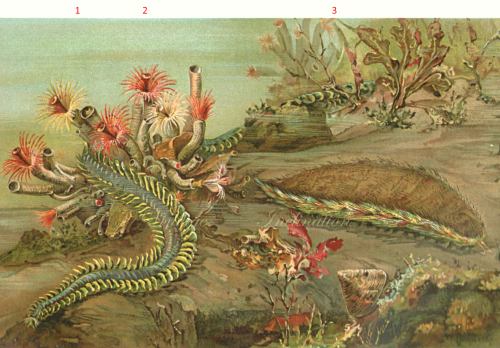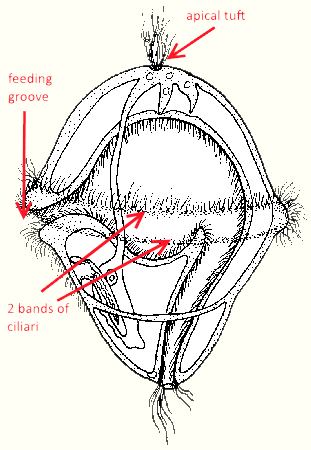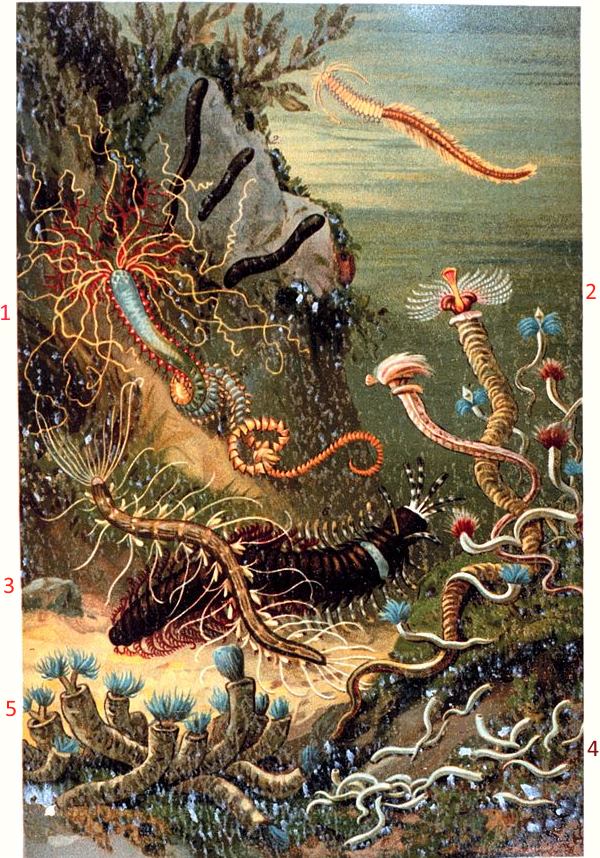fan worm or calcareous tubeworm
The calcerous tubeworm is a tube-dwelling, filter-feeding worm. The fan worm lives in a slightly bended calcareous tube at the bottom of shallow seas. The tube is attached to a hard surface such as a rocks or bivalve shell.
the fanworm and danger
The worm has many tentacles that spread out into feathery fans. These fans are used to collect plancton. The head has also eyes: when these eyes detect a shadow the worm retracts itself into the tube and closes it with the promotorium, a white cover.
distribution of the calcareous tubeworm
The calcareous tubeworm lives in every ocean and almost everery sea. For example in the northeast Atlantic Ocean, like the Irish sea, the North sea and the Mediterranean Sea. The fan worm lives in depths 250 meters.

Some marine worms of the Northsea.
1 fanworm or serpula vermicularis
2 Nereiphylla paretti
3 sea mouse of Aphrodite aculaeta
The larva of the calcarous tubeworm
Serpula vermicularis is dioecious, with separate male and female sexes. The swimming larva is called a trochophore: it is part of the plankton and capable to feed itself with algae.


1 Terebella emmalina or Pista cretacea
2 fanworm or serpula vermicularis
3 Eunice magnifica
4 Pomatoceros lamarckii
5 Sabellaria alveolata